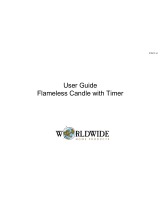Before Use
- 5 -
Contents
Before Use
Information for Your Safety ........................ 3
Quick Guide .............................................. 7
Standard Accessories............................... 8
Names of the Components ....................... 9
Preparation
About the Batteries (Number of
recordable pictures) ............................ 11
Inserting/Removing the Batteries/Card
(Optional) ............................................ 14
About the Built-in Memory/the Card ....... 16
Setting Date/Time (Clock Set) ................ 18
About the Mode and Menu Operation .... 20
Mode switching ................................ 20
About the menu operation ................ 21
Using the quick menu ....................... 24
About the [SETUP] Menu ....................... 25
Basic
Taking Pictures Using the Automatic
Function (Intelligent Auto Mode) ......... 30
Scene detection ............................... 32
About the ash ................................. 33
Settings in Intelligent auto mode ...... 33
Taking Pictures with Your Favourite
Settings (Normal Picture Mode) ......... 34
Focusing ........................................... 35
When the subject is not in focus
(such as when it is not in the
centre of the composition of the
picture you want to take) .................. 35
Preventing jitter (camera shake)....... 36
Direction detection function .............. 36
Taking Pictures with the Zoom ................ 37
Using the optical zoom/ the extra
optical zoom (EZ)/ the digital zoom .. 37
Playing Back Pictures (Normal
Playback Mode) .................................. 39
Displaying multiple screens (Multi
Playback) .......................................... 40
Using the playback zoom ................. 41
Deleting Pictures .................................... 42
To delete a single picture ................. 42
To delete multiple pictures
(up to 50) or all the pictures ............. 43
•
•
•
•
•
•
•
•
•
•
•
•
•
•
•
Advanced-Shooting
About the LCD Monitor ........................... 44
Display in large size ......................... 45
Taking Pictures Using the Built-in
Flash ................................................... 46
Switching to the appropriate ash
setting ............................................... 46
Taking Close-up Pictures ........................ 51
Taking Pictures with the Self-timer ......... 52
Compensating the Exposure .................. 53
Taking Pictures that Match the Scene
being Recorded (Scene Mode) ........... 54
q
[PORTRAIT] .............................. 55
w
[SOFT SKIN] ............................. 55
e
[SELF PORTRAIT] .................... 55
r
[SCENERY] ............................... 56
t
[SPORTS] .................................. 56
y
[NIGHT PORTRAIT] .................. 56
u
[NIGHT SCENERY] ................... 57
i
[FOOD] ..................................... 57
o
[PARTY] ..................................... 58
p
[CANDLE LIGHT] ...................... 58
a
[BABY1] /
s
[BABY2] ............. 59
d
[PET] ......................................... 60
f
[SUNSET] .................................. 60
z
[HIGH SENS.] ............................ 60
x
[HI-SPEED BURST] .................. 61
c
[STARRY SKY] .......................... 62
v
[FIREWORKS] ........................... 62
b
[BEACH] .................................... 63
n
[SNOW] ..................................... 63
m
[AERIAL PHOTO] ..................... 63
Motion Picture Mode ............................... 64
Useful Functions at Travel Destinations .. 67
Recording which day of the
vacation you take the picture ............ 67
Recording date/time at overseas
travel destinations (World time) ........ 70
Using the [REC] Menu ............................ 72
g
[PICTURE SIZE] ........................ 72
h
[QUALITY] ................................. 73
j
[SENSITIVITY] ......................... 73
k
[WHITE BALANCE] .................. 74
$
[AF MODE] ................................ 76
&
[BURST] .................................... 78
'
[DIGITAL ZOOM] ....................... 79
(
[COLOR MODE] ........................ 79
)
[STABILIZER] ........................... 80
•
•
•
•
•
•
•
•
•
•
•
•
•
•
•
•
•
•
•
•
•
•
•
•
•
•
•
•
•
•
•
•
•




















